Please Support TheBeachcats.com

The ‘A’ Class Catamaran – Its place at the top table.
At 18ft long with a total allowed rig area of 150ft2, but weighing in at a mere 75kg, the ‘A’ Class is very much a Formula One car in catamaran form and in the last few years, developments have seen this class take off more than ever before, quite literally.
Anyone with an interest in the hi-tech aspects of sailing will probably know something of the ‘A’ Cat. They are spread worldwide with large fleets in Australia, USA/Canada, throughout Europe and there is even a growing fleet emerging in Argentina. They have had some 55+ years of open design resulting in them now being amongst the most highly developed small sailing boat classes on the planet.
Some History.
Originating from a desire in the late 1950’s by the IYRU (Later renamed ISAF and now World Sailing), to encourage racing and design development of catamarans. They proposed four classes with simple size criteria based on length, beam and sail area, and crucially, with minimal design rules. The A-Class logo was chosen by the IYRU when their committee decided in 1956 to classify the catamarans into those 4 categories. A, B, C and D as construction classes. To symbolize the two hulls the letter "A" had a double underlign, same as the B's, the C's and the D's. From the beginning the A-Cats had the double underligned letter "A" on the sails and it was used on the letter heads. (Examples were the A-Lion, Australis, Unicorn, Quest A, Catalina, Rhapsody a.s.o.). The ‘A’ class is by far the largest remnant of the four classes. The ‘B’ class was a 20ft twin hander with 235ft2 of sail and developed into the Tornado and a few offshoots such as the F18. The ‘C’ class was another twin, but at 25ft with a 300ft2 rig, has become a super sophisticated monster and the pinnacle of small cat design that races for the Little America’s Cup. The ‘D’ Class was 32ft and a sail of 500ft2 with three crew, but rapidly dwindled away.
Various designs for the ‘A’ bubbled away until the IYRU held trials to seek out the best designs in the ‘A’ and ‘B’ classes and to award them international status. At the Catamaran Club on the Isle of Sheppey in 1967, the Tornado won the ‘B’ class, and in the ‘A’ class category the British Unicorn competed, along with with several other boats, against Graham Johnston’s Australian Australis design. At that time the spec was simply to be a single-handed cat with sliding seat or trapeze restricted only by length, beam and sail area. The Australis design won and gained international class status. However, the Unicorn design still gained popularity in the UK and Europe. It eventually became a strict one-design class with rules on hulls, weight and mast diameter, which accounts for the vastly different sail shapes now seen on the two boat designs. Today the Unicorn still measures and is still accepted as an ‘A’ Class cat.
So, the free reign given within the ‘A’s development class spec allowed several other designs to arrive, each an attempt to improve on the other. All modern designs can trace their evolution back to these early boats in one way or another. Many home built designs turned up, and home building of ‘A’ Cats continues today, particularly in the USA, where home building tends to be more popular.
As building and materials technology improved, the stitch and glue plywood built and the glass fibre built boats, in order to save weight and get down to the absolute minimum, needed to be made with the strength only in certain high load areas – shroud plates, beam mounts, foil cases etc., This resulted in the class getting a bit of a reputation for being fast but rather delicate. Gradually these materials gave way to the carbon foam and carbon nomex sandwich construction.
Fast Hull Shapes
The Australis hulls were pointed at both ends similar to a canoe, in an attempt to produce a drag-reducing hull. The designs were often determined by the materials available and nowadays space age construction techniques are possibly one reason that the modern boat is now becoming increasingly popular, as it is producing immensely stiff and strong yet light boats, capable of withstanding hard racing for several years.
Currently, the modern ‘A’ cat bears a striking resemblance to its rather higher profile cousin, the AC45 . The distinctive Dreadnought shaped bows of the ‘wave-piercing’ hull design reduces the pitching moment when in waves. The hull is essentially upside down when compared to many boat hulls. The widest part is towards the bottom with the result that the hull won’t sink as far before the buoyancy starts to push it up again so floats higher. They also tend to have the beams bonded in making it a very stiff one-piece unit. Hull sections and profiles continue to change. The requirements of a boat designed to foil mean that the underwater hull shapes are starting to be optimized for lighter wind sailing, as the hull should be out of the water when it is going fast in a higher wind.
On the latest 2016 boats, aerodynamic drag is now recognized as increasingly more important as the airflow over the boat, with the added apparent wind, can sometimes be as high as 30 or 40 knots. Beams are now aerodynamically streamlined, smoothing the airflow over the drumskin tight trampoline. Double skin trampolines are also a new design feature. Previously the underside of the tramp was a mass of ropes, chords and bungees. Now these are sandwiched between two airtight skins. On one new design, the Holland Composites DNA, even the tiller bar is now streamlined to match the rear beams curved profile!
There are several elements key to the ‘A’ cats speed and success. Over the last 15 years much work has been done on the design of foils (rudders and daggerboards). Initially the foils were all straight as the technology to make them anything else, without risking failure, was simply not available. However, they could be put in at an angle and canted towards the centerline. This seemed to give a little lift to the boat, thus making it faster by reducing the drag of the hull when the boat was heeled and flying a hull. They were also made slimmer and longer, and this higher aspect ratio vastly improved the drag effects over a broader chord foil. Then in 2005, Dutch composites expert and sailor, Pieterjan Dwarshuis, raced in the Worlds with a C shaped foil. This supplied much more lift and helped in getting the windward hull flying when going downwind – doing ‘the Wild Thing’ as it is known in cat circles. And, as the leeward foil curved under the boat more, it produced much more lift as the angle of attack (Rake) could be adjusted also. Result – particularly when combined with small winglets on the rudders was that the boats went faster. Within a couple of years these foils became more commonplace and by 2008 German sailor, Bob Baier, had won the European championships using a set.
However, some feared that complex hydrofoils could possibly be fitted to the boat, rendering it fast but impractical and expensive. So in 2009 a rule was brought in with the intention of preventing this hydrofoiling from happening. The now famous ‘A’ class ‘Rule 8’ stating that all foils must be inserted from the top of the hull, and that there must be a minimum distance between the tips of the bottom of the boards of 75cm from the centreline. That seemed to do the trick and for a few years things went along nicely. But the foil building technology steadily improved and a consistent way was found of producing extremely strong shaped daggerboards from carbon composites. In 2013 the foils had developed from a C shape into a J shape and as a result of redesigned rudder winglets, positioning them at the bottom of the blade, the boats started leaping about like salmon. So the next logical move for this development class boat was obvious and was to make it fly. The boat has about the same power to weight ratio as a foiling Moth so it was assumed that it should be able to fly, but for one crucial potential problem – Rule 8. This meant that conventional L shaped boards, similar to the AC boats foils, are not class legal. But thinking around corners is what designers and sailors like to do and before long, designs for foils emerged that complied with the top insertion, limited span restrictions and provided enough lift to get the boat clear out of the water. A movable rake system allowed the angle of attack of the boards to be varied combined with fore and aft movements of the crew weight. The real turning point came in 2014 before the Worlds in New Zealand.
Many of the America’s Cup crews are also ‘A’ cat sailors. In fact the most successful ‘A’ Class World Champion is the ETNZ skipper Glenn Ashby.
The ETNZ America’s Cup team took delivery of half a dozen ‘A’ cats and set about with gusto seeing how far they could be pushed. Improved, redesigned and strengthened boards and rudders started flying around the world on express carriers as they broke and re-broke the foils in an attempt to push the boat to it’s limits. It worked and the boats started to fly, albeit in the hands of these sailing superstars, but techniques were discovered for getting the boats foiling for longer each time. As a result of this, Glenn Ashby won yet another world title. This paved the way for the current developments.
Optimized designs, where daggerboard positions and beams are moved slightly, and newer, more stable foil sections that have lower drag are now arriving, with a Z and J/Z shaped board proving more stable when combined with T or L shaped rudder tips. However, the holy grail of upwind foiling is still being worked on. And this is all still done within the restrictions of Rule 8. The top insert only rule has prevented earlier, more stable, and probably easier foiling to happen if an L shaped main foil were to be fitted. However, the very fact that it is less stable probably results in a faster boat and the need to raise windward foil, as would be the case of the higher drag L foil, is unnecessary and something a single-handed sailor’s workload can do without.
Fast Rigs .
The ‘A’ class rules allow you to do anything as long as the total area, including the mast, does not exceed 150ft2. This area has traditionally seen the greatest developments in the past. Shape is entirely up to the sail maker based on mast shape and flexibility. The original masts were flexible tapered affairs as still seen on the Unicorn today. But in the early 1980s the ‘A’ class moved more towards an untapered wing type mast which was able to be rotated, somewhat like the leading edge slat on an aircraft wing, and thus create the sail shape more efficiently and to adjust it to cope with the windspeed changes created by the apparent wind. Techniques developed and composite masts began to appear in Europe about 25 years ago. The sails design paralleled the mast designs.
Initially they were fully battened but conventionally tapered towards the head. Then, in the mid 1980s the ‘Fat Head’ sail appeared on the ‘A’ cat for the first time. This lower drag high-aspect ratio rig, much like a glider wing, allowed and helped the boat to fly a hull much earlier downwind with the resultant reduction in drag. Upwind, powerful 12:1 downhaul and 9:1 mainsheet systems could flatten the sail and when the carbon mast arrived, this was even more efficiently achieved. As the sail area is the determining factor, not the shape, variations were tried at various times. Really ‘Fathead’ sails, with the heads at over 1000mm were the thing for a while. These required the leech to be cut away in a concave manner to conform the area rule, but now the more popular ‘800’ head offers a good compromise of power and heeling moment. Rigid wing type rigs were also seen occasionally. Back in 1978, at the European championships, a wing sail proved unbeatable in light winds. More recently designers, such as the US mast maker and ‘A’ cat ace Ben Hall, have experimented with a wing sails. But, their practical handling off the water still proving troublesome.
The most current sail development is the ‘Decksweeper’ sail. This is a sail that uses the trampoline as the end plate, making it more efficient, similar to winglets seen on airliners. The sail has its centre of effort lower down, and thus reduces the heeling force created by the fatter head sail and is ideal for a foiling design. The byproduct of this is that going upwind, where any heeling force, above just flying a hull, is not wanted with either foil design, is that it feels like you have another gear. Now much more of the power is pushing you forward. And this is usually sufficient to compensate for the higher drag created by the more complex shaped foils with their higher surface area. So, faster uphill, faster downhill, what’s not to like? However, the downside is that when it’s not foiling conditions, the decksweeper is less powerful and thus the C board, or ‘Classic’ boat is still king.
The decksweeper was first tried on the ‘A’ cat in 1987 in Australia but proved to be unbeneficial compared with more conventional designs. It was tried again a few years ago, by former World Champion Mischa Heemskerk, who was interested in exploring it again on a more modern boat design. The trials were inconclusive and the project was shelved for a while. Then 2015, in the search for more power but with less sideways pressure, as required by a foiling boat’s need to be sailed flatter, he reappeared with one at the 2015 Dutch Nationals and wiped the floor with everyone, including Glenn Ashby, who was there getting ready for the Worlds a few weeks later. But you can’t keep that friendly little Aussie down for long. When he arrived at the Worlds, he’d simply chopped one of his older sails down along the leech, and sewn an extra bit onto the bottom to reach the tramp. This was enough to get him back on track speedwise, and in a variety of conditions, he managed to beat Heemskerk by an increasing margin each race to retail his World title.
Much design work was done over the winter of 2015/16 and two of the major manufacturers both produced more optimized designs. The Polish Exploder came out with their Ad3, with a design input from the Spanish based D3 Applied Technologies design team. The other was the Holland Composites DNA F1 design. A radical looking boat with advanced aerodynamic features and a fully carbon fabric stiff trampoline. Both designs have proved to be game changers and with little to choose from as regards performance. Misch Heemskerk won the 2016 Worlds on the F1 with Darren Bundock 2nd on the Ad3. Both designs foil earlier and are more stable when doing so making them easier to control. It would appear that the design curve is starting to flatten out again now as regards hull and foil design with these two boats setting the standard of performance.
The ‘A’ Class Future
The two foil types are causing a little debate within the class though. Although all the boats measure as ‘A’ Class cats equally, the foiling/floating thing appears to irk some in a few national class associations. Some want separate races for foilers, claiming that is not fair now to race both on the same course. A movement to start a ‘Classic’ class of non-foiling boats has been suggested. But, most associations simply prefer to split out the results and run a parallel results system. And, at those lighter wind events, or in areas like Southern Germany, you don’t hear many complaints.
New foiling boats arrive and older second hand straight or C board boats find ready new homes with some being converted to a foiling configuration with new foil cases and rudders, whilst others are sold to the encouraging number of new sailors entering the class. This is often the best place to start, as it’s not actually a hard boat to sail initially. (The class has a minimum of 5kts and max. limit of 22 kts of wind for racing) Beautifully fast and responsive yet without many of the unpleasant characteristics that some other cats will catch you out on, e.g. the long bows tend to reduce pitchpoling. The added benefit of being 75kg makes it really easy boat to handle ashore; a true single hander, the only thing where you might need someone else’s help for 2 minutes is with stepping the mast.
The next jump looks like it will be in rig design. It’s open design rules means that it will continue to see innovation and development within its rules as yet more ways are found to make them go even faster. Their ability to be altered, modified and improved will also continue to see the ‘A’ cat being used as a test vehicle for design ideas on larger boats. Who knows what is around the corner designwise, but the ‘A’ cat should be able to meet the challenge.


The British
'a' class catamaran, association.
The official site for the British 'A' Class Catamaran Association. Designed to inform new and existing 'A' Cat sailors about UK 'A' Class trends.

ISAF A CAT rules 2013
Top tips from the European #6 and GBR #1 Classic sailor Hugh Macgregor on how to sail and set up the classic boat and rig.
Hugh is a professional sailor and coach. He has been a multiple Champion across various classes.
I sail a Classic straight board 2009 Tool, with Hammer deck sweeper sail, Saarberg stiff untapered mast, Exploder boom, and Exploder asymmetrical winglet rudders, I am around 100Kg. The A Cat world is very diverse, my settings will not work exactly the same with your setup, but may help you generate a starting point. As I write this I am preparing for the Euros in Garda, and am trying to get my boat and myself as prepared as possible, in order to justify the expense of going. It’s a bucket list, once in a lifetime opportunity to tick off a Garda event.
I have worked hard to optimise my boat, the hull finish is perfect, the foils are damage free, and prepared to 3000 wet and dry, which makes them silent at speed. I have the rudder blades parallel, with no toe in. I have spent time adjusting the rudder rake and mast rake to make my boat want to sail in a straight line when powered up upwind, with no weather helm and light steering. My T foil rudders are set to half a degree of lift, more lift is good upwind, but pushes the bows down too much downwind. The T foils allow you to safely push much harder downwind, it’s a modification I would recommend. I bought a Saarberg stiff mast to suit my weight, and Micky Todd (Hammer sails) made a very nice sail to fit both my mast and my weight. I make extensive use of Micky’s tuning guide, and thank him for his coaching and advice, he showed me what an A Cat can really do. I have a Harken 40mm 9:1 mainsheet system with 8mm swiftcord, and 2 Harken 60mm auto ratchets to help manage the load. Good gloves are a must, the high aspect A Cat rig is all about mainsheet action.
A deck sweeper sail is a must have, it moves the power of the rig lower, where you can use it, making the boat faster and better mannered. A curved boom gives much better control of the foot than a boomless one. I currently sail with about 45mm deflection in my spreaders, and a diamond tension of 26 on the loos gauge, I don’t adjust these unless I change sails. My rake is to halfway between the aft beams and the transom, about six degrees, I find this is where my boat balances the best upwind. I go one shroud hole down (seven degrees) for days I should probably not sail, and one hole up (five degrees) for very very light days, but I mostly keep it in the neutral position. My shroud tension is 12 - 16, if I have more than 14 I cannot get enough mast rotation downwind in light winds, but more makes the boat feel more settled in upper wind bands. I tie my video tape streamers 1.5 meters up from my forestay fittings, and have them long enough to touch the mast upwind. It is worth getting a tuning guide from the sailmaker for the sail you use, to give you a starting point for settings.
Sail setup:
My main calibration when I prepare a sail I have not used before is the downhaul. Firstly, I pull on the downhaul until the sail is at its fullest, ie the most camber in the top half, then put a calibration mark on the mast. This is now my minimum setting, 0%, I pull it to this setting before the start, and never ease beyond this setting until after the finish, even in the lightest winds. I then pull on as much downhaul (and mainsheet) as I dare, until the top half of the sail becomes perfectly flat, then mark the mast/sail again. This gives me a range of 0% to 100% for the downhaul. The downhaul is the main power control you have, it is worth servicing and maintaining your downhaul system to make it as friction free and reliable as possible. If you cannot consistently get enough downhaul, because of lack of range or purchase, or old knackered blocks, you will be slow upwind. If you rip your sail with downhaul, it is a sign you need a better mainsail, not that you used too much downhaul. I have a 24:1 downhaul, as it allows me to adjust it more accurately, and make it easier to ease, with a more flexible mast 12:1 or 18:1 should be adequate.
The outhaul I always have as eased as possible, I try to have it set so 2/3rds of the sail is touching the curved boom when fully powered upwind. If the boat feels a little sticky, I ease it another inch. My calibration on outhaul is so I can always set it to the exact same amount, if it is an inch too tight, I find myself very slow upwind. I never adjust it to the wind strength, for me it’s set and forget. Power at the top of the mast can be useful, or it can just trip you over. Power at the bottom of the rig is always helpful, it is your main engine room.
The batten tension should be only just enough to stop sail creases developing across the batten when sailing. Mark your top batten when you’re happy with the tension, so you can always retie it in the same place, too much top batten tension or too little messes with your head.
Upwind modes:
Note: traveller always on the centreline. Video tape forestay streamer always touching the mast.
Upwind Light winds: before trapezing, approximately 1 - 5 knots wind.
Downhaul - 25%, but maybe up to 50% if very light winds making the rig sticky, or if you have a very full sail, and I usually pull on 50% downhaul for tacking to aid flicking the battens. Mast rotation - pointing to the daggerboard, I use my foot on the mast base to force it to rotate. Fore and aft trim - Sitting up at the main beam, or a little ahead, try and get the bow knuckle in the water. Mainsheet - it is very easy to stall an A cat rig with too much mainsheet tension in these conditions, I try to keep enough twist to avoid stalling, if in doubt let it out.
Upwind Transitioning: from sitting to trapezing, 5 - 8 knots of wind.
This is the hardest mode change to get right, as the apparent wind doubles in this range. Downhaul - 0% when sitting, but immediately up to 25% when you start trapezing. Mast rotation - start bringing it back to halfway between daggerboard case and back beam. Fore and aft trim - I move to behind the shrouds go out on the trapeze, if there is enough wind once on the wire I stay where I can just have the leeward bow knuckle at the water line, but if I am struggling to stay on the wire, I crouch in front of the shrouds, and really immerse the leeward bow, this helps with pointing. Mainsheet trim: In this mode, I try to have no twist in the rig whatsoever. You will find that there is a point when, as you pull in the mainsheet, firstly the twist reduces, then at a certain point, the camber in the upper rig starts to reduce. It is just before the camber starts to reduce that the rig is generating maximum power, ie minimum twist maximum camber, this is where you need it when you first get out on the trapeze.
Upwind: power band, 8 - 13 knots of wind.
This is when nothing that floats can touch an A Cat, it’s a magic carpet ride that makes all other boats look like traffic cones to go around. Downhaul - This is the range where my downhaul never stays the same for long, in 8 knots of wind it is at 25%, in 13 knots of wind it is at 100%. Mast rotation: by 13 knots, it will be pointing at the leeward rudder. I never bring it further in than the leeward rudder, it is worth having a strop on your mast rotation control system to prevent this. Fore and aft trim: aft of the shrouds, keep the bow knuckle just at the waterline, not in, not out. Mainsheet tension - tension the mainsheet for zero twist as a starting point. Most people when they transition into A Cats from other boats have a tendency to pinch into the wind too much in these conditions. If my video tape streamer wants to sit to windward of the mast under full mainsheet tension, I pull on more downhaul to flatten the top half of the rig, to bring the streamer back down to the mast. If my streamer is to leeward of the mast, I have too much twist in the sail, I pull on more mainsheet tension, and maybe ease a little downhaul, to bring it back up to the mast. Once the wind increases to the point where I am constantly easing the mainsheet (ie adding twist) to avoid pinching, I have the downhaul on at maximum 100%. Try to use more mainsheet action and less steering to get through the gusts and lulls, it’s faster. Remember, easing the mainsheet without pulling on downhaul, increases camber therefore power / drag at the top of the rig, where you least want it. If there is enough wind that you are introducing twist into the rig, you need to flatten the top half of the rig first. Downhaul is your primary tool to flatten the top half of the rig.
Upwind, 13 to 22 knots:
Here is where you guys with C boards and T foils can really take off, if you take a step back to get the first meter of boat out of the water, and keep easing the mainsheet to keep the streamer on the mast, you can get the boat into a skimming mode. If it all gets a bit too hectic, try dropping the traveller by a couple of inches, try lifting the daggerboards by 150mm, just to calm it down. If you find you cannot make the top half of the sail flat enough with downhaul in these conditions, you can try getting a stiffer set of top 4 sail battens, or old school would be to turn your top battens around, luff to leech, it all makes the boat a little less twitchy, at the expense of downwind power.
Downwind Modes:
Downwind, Mild thing, 1-5 knots of wind.
Downhaul - 0%. Mast rotation - off, force the mast to 90 degrees, with your foot or an over rotation control. Fore and aft trim - sit forward at main beam, to get the transoms out of the water. Traveller - maximum ease. Daggerboards - if straight boards, both up, if C board, windward one up. These are the most difficult conditions to get a A Cat downwind, it is very easy to stall the rig, and very hard to build speed. I aim to keep the apparent wind between 5 and 10 degrees forward of the beam. Keep the rudder use down to a minimum, keep the tiller extension planted on the deck to reduce movement. Mainsheet: Take the mainsheet directly from the clew for maximum sensitivity. Sheet in and reduce twist very gradually, as you build speed and bear away, but be prepared to head up and ease sheet again if you stall the rig. Twist is useful in these conditions, as it means at least some of the rig will be working at all times, if you have no twist, the rig is either stalled or working, not very helpful in light shifty winds.
Downwind, Transition, 5 - 10 knots.
Downhaul - 0%. Mast rotation off. Fore and aft trim: start moving aft, in these conditions, I am aiming to keep both hulls on their design waterline, bow knuckles and transoms just skimming. Traveller - from just inside of leeward hull to 400 mm inside of the leeward hull. Daggerboards - both up or windward one up. Mainsheet - Sheet for minimum twist maximum camber, I use the mainsail telltales to help me same as upwind use, but always being ready to ease an armful if it stalls. Once the breeze gets closer to 10 knots, the traveller starts to act like an accelerator, allowing you to go faster with very little increase in height.
Downwind, Wild thing, 10-16 knots.
My current rule of thumb, if there is enough wind to trapeze and fly a hull consistently upwind, then there is enough wind to fly a hull downwind.
Downhaul - 0%. Mast rotation - off. Fore and aft trim - just in front of rear beam to just behind rear beam. Traveller - leeward toe strap. Daggerboards - windward one up or both down. Mainsheet: Sheet for minimum twist, maximum camber and get the boat going fast before trying to lift a hull. Once up to speed, a quick little luff should unstick the windward hull before a big bear away and lots of playing the sheet to keep it flying. Prioritise accurate steering and sheeting over moving your weight around. In 10 knots of wind, I try to get my feet under the leeward toe strap before I pop a hull, in more wind, I try to get both feet under the windward strap and my arse wedged on the aft beam before lifting a hull, I like to be locked into the boat before it leans over too far. Bear away and ease sheet in the gusts, head up and sheet in for the lulls, and use mainsheet to smooth out the ride height. If the bow does start going under water, a sharp ease on the sheet will let it pop back up.
I am not agile enough to combine wild thing with trapezing, and I have straight boards so my boat does not generate lift with speed, there are a few modes I am probably missing out here, there are many more qualified sailors than me to explain them.
Downwind, 16 - 22 knots:
Downhaul - 25% - 50%, Mast rotation off, Fore and aft trim - as far aft as you can go. The convention is to point the boat deep downwind, with traveller up to inside of leeward hull. Ease sheet a bit and head up to build speed, and bear away and over sheet to calm it down, reversing the airflow over the mainsail leech to luff when required in the bigger gusts. I very rarely try to fly a hull in these conditions, as on my straight board boat I need all the buoyancy I can get. Another mode you can play with is to drop the traveller right down, ease the sheet, and keep the apparent wind on the beam, with the sail luffing slightly, and 50% downhaul. It has the advantage that you can always sheet in for more power and ease for less, it can help you make a leeward mark layline when you’ve misjudged your last gybe, and end up coming in a little hot. Whatever happens, the further back you can get your bum, the harder you can push it downwind without sticking the leeward bow in. If you do stick a bow in, you have a good chance of saving a capsize if you are properly wedged in to the aft beam and toe straps, if your bum slides forward, it’s swim time. Capsizing is slow.
Finally, maintenance - keep your boat in good condition. A minor breakage can often snowball on the water, a broken trapeze line or tiller extension joint can lead to much greater damage, a planned maintenance schedule can be useful, 2 years for a UJ, 2 years for trapeze strings, 3 years for shrouds, forestay, and their shackles, 5 years for downhaul equipment etc. Carefully check all your shackles, split rings, rudder fastenings etc after a big day.
Most damage to A Cats happens in the dinghy park, the mast can flap like a sail during a gale, and damage your boat, and push up the insurance premiums for all of us. To avoid damage, tie your mast spanner to the toe straps so the mast cannot rotate. Use your tiller extension to pass a line around your mast above the spreaders, and tie it down to the aft corner, this kills any resonance vibration that can damage the rig. Most importantly, tie your trapeze strings down tightly to hard points either side of your boat level with the main beam. Don’t leave your mast up in winter. Finally, tie down your neighboring boats, so they don’t blow onto your boat.
The best way to learn, and to optimise your boat and sailing style, is to come to A Cat events, it’s a friendly class, everyone will help you get up to speed as much as they can. A Cat’s are pretty bad handicap boats, but in class racing they offer some of the most intense and rewarding racing in the sailing world, accessible to all ages and for a wide weight range, there is not a better place to be on the water.
Tuning Your DNA
A set up guide can be found at http://www.racingcats.com/tuning_support/setting-up.php
Some figures for the set-up:
Toospore rudders 2-3 mm (measure rudders fore and aft at transom level)(always check after reception of the boat).
Rudder raked under the boat: no more than 15 mm (factory settings can be slightly more)
Toe-in daggerboards 3-5 mm (difference fore aft daggerboards) (= standard factory settings)
Daggerboard J or C board slider: 1 cm space to the back end (standard setting) for more lift move daggerboard more aft, for less lift move daggerboard forward. Just untighten the screws lightly and use the board as a lever to change the position of the slider
Mastrake: just behind the hatch in light winds, on the transom in medium winds, halfway the transom in stronger winds. (Procedure; keep trapezeline on the deck at the fore stay and see where it touches the hull aft). If you adjust mastrake you might have to adjust sheetlength too.
Polish daggerboards and rudders with grid 600 and then 1000 or 1200. Especially the finish of the daggerboard has a huge impact on the performance. New boards are not polished yet.
Upwind: traveller always in the middle, reduce mastrotation when the wind picks up.
Downwind: Traveller on hiking strap when doing the wild thing, mast rotation 80-90 degrees
Do not oversheet while doing the wildthing
Keep daggerboards down will doing the wildthing, pull the weather daggerboard up in marginal wildthing conditions. In the mild thing or while going flat pull both daggerboards halfway up.
In strong winds put the boards up 10 cm.
Position yourself between the side stay and the daggerboard case when you are going upwind. Only step back when the boat is on full speed. Hike before the sidestay in light conditions (see pics Stevie at the Worlds in Cesenatico). Many sailors stand to far back when going upwind especially just after a tack. (Keep fat bottom out of the water)
Use surf wax on the trampoline to enhance grip in tacks and gybes.
Use toestraps if you want to trapeze downwind. You do not need these in the lighter circumstances but if the wind picks up your will suffer from less fatigue.
If you can trapeze downwind some cunningham may result in higher endspeeds and more control.
If you cannot keep the bow up downwind come out of the trapeze, release the traveller a bit and steer for depth. Less mast rotation may improve control but hurts speed as well if wind is not stable.
Ask your sailmaker for the right amount of spreaderrake and the right amount of diamond tension. Use a loose gauge to measure the tension.
If you go from the windward mark to the offset mark do not step back and keep yourself positioned at the daggerboard case to prevent aggressive bow ups.
If you sail a long distance race reduce the amount of lift by moving the slider .6 cms forward.
Put your daggerboards in the trampoline bag before going ashore, else a board may wash off the boat and may sink.
Do not make jumps on purpose with the boat while reaching This might damage the boards.
Maintenance:
Keep your hulls clean. Wash the boat with water after sailing on saltwater. Transport it either in a box or use lycra covers.
Teflon wax sealer can be applied on both the hulls and daggerboards for less friction.
Put water on your daggerboards before you put these in daggerboard cases. Do not hang a daggerboard in the water if you are already sailing as it can be swept out of your hands.
Keep the screws on the pushrods of the rudders tight else the pushrod pin might rotate.
Check the knot in the daggerboard rope regularly as the daggerboards might sink if it comes loose.
Drill a 2 mm in the hatch covers to let air out in case of heating by the sun.
Do not drill holes in the beams as the beams are watertight and part of the positive safety buoyancy.
Do not use aceton on the paint to remove glue or stickers but use spiritus/alcohol instead.
Clean travellercar with clean water.
Check trapeze ropes regularly
Mast Setup - Landenberger
Over the past few seasons it has become quite clear that many people who have been experiencing speed or power problems have had little basic knowledge of what they can do with the mast settings. It is clear what do with the cunningham, simply pull on it to get the pressure out of the sail as you need, but often the mast is left unattended to, as a last priority. In fact it is one of the most important speed controls on the boat. It is important to understand how to use it, and what you want to have in the sail shape for different conditions. It is not so easy to just come up with numbers and angles that will suit every mast and sail so I will try to make some key points to help understand this correctly.
The more pre bend set in the mast the more effect mast rotation has on the sail shape.
The effect of the spreaders means that the more the mast is rotated backwards, the more the lower mast section can bend forward (in the direction of the boat) and the stiffer the top section becomes. Leaving the cunningham tension out of the discussion at the moment, the result would be that the sail becomes flatter in the bottom and fuller in the top.
Rotating the mast more forward allows the spreader to start to work and the lower mast section becomes stiffer in the forward direction and the top becomes softer backwards. The result is the sail will become deeper in the bottom and flatter in the top.
Cunningham pressure flattens the sail and will tend to flatten the top more than the bottom since the top of the mast is unsupported and more free to bend. Understanding the sail shape that works best in the differing conditions is then very important. For example in Flat water you would like to have a very even profile through the sail from top to bottom with good power in the top and the possibility to pull the mainsheet quite hard without stalling the back of the sail. On flat water you can sheet hard and point higher. By wave conditions you would want good power down low in the sail and have the top more open and twisted. This gives you power and the twisted top allows the boat to accelerate easily letting you steer around more and power the boat through the waves easier. Generally you can’t point as high as the boat on flat water but because of the waves you can achieve a much better VMG (velocity made good).
The typical example is that with increasing wind the sailor will pull the Cunningham hard but not adjust the mast rotation to go with it. The effect of the Cunningham is flattening the sail, but more in the top. This allows the leech to open. The boat may feel ok but often the leech is to open and you can’t point high enough. This setup can be good in big waves but on flat water the sailor would like to have the leech standing much straighter so they should rotate the mast further back. If you go back to our original points you can see that the mast becomes stiffer in the top and can bend more in the bottom. This is therefore powering up the top and flattening the bottom of the sail. With the Cunningham pressure you can sheet on hard and point high with good speed.
The other typical mistake which occurs, is that the sailor by strong wind, simply pulls the mast back in line with the boom and pulls full Cunningham pressure. Because the mast rotation is too far back the sail becomes too full in the top and too open in the bottom. The sail will have a lot of twist which some sailors think is good for strong wind, but because of the top of the mast reaching its maximum stiffness in the aft direction of the boat the sail will remain too full in the top. The end result is a sail which is twisted to far and with too much profile for the strong wind. The twist causes you to loose pointing ability and the depth is causing excessive drag, just slowing you down. You are in effect going slower and lower than the correctly trimmed boats.
Spreader rake is also another significant factor in setting up you rig. It also plays a part in how much the rotation angle affects the depth of the sail. That can be a whole subject of its own, so for now I make just a few comments. Try to think of pre-bend as controlling the position the mast takes its bend. The more pre-bend you make in the mast the lower the mast likes to bend. The lower the mast tries to bend the straighter the top section becomes. The flatter the pre-bend the more the top section tries to bend. The normal reaction of sailors is to increase the pre-bend for strong wind to flatten the sail and reduce it in light wind to increase power.
Principally that is correct, but it must be incorporated with the rotation to get the right balance in the sail. Like most things, too much or too little can be harmful. It is a great failure made by many sailors to flatten the spreader angle to far reducing the pre-bend in the mast to almost straight. For light wind this is doing more harm than good. The heavier sailors also often request more luff curve because they are looking for power.
With more luff curve and flatter spreaders light wind speed can quickly come to an end. The sail will become very full down low with a deep entry angle from the mast and a very closed leech section. When you get the first wind in the sail you may get a feeling of power, but you may also experience the boat just wanting to fly a hull but not wanting to go easily forward. The boat will not point and will not accelerate.
In many cases it is actually better to go the other way. By very light wind you can increase the pre-bend to open the lower part of the sail and reduce the entry angle of the sail behind the mast. With the rotation angle set correctly to get the head standing up just the right amount you can be very fast. Just remember flat is fast and deep is slow. It has a lot more to do with entry and exit angles of the sail to achieve height and power.
Amongst sail makers there are many different ideas, and history has proven that there are many ways to build fast sails. The most important thing is that the sailor can understand how the sail should work and manage it well. Also restrictions on materials and designs in the boats themselves change the way the sail has to work to achieve the best results. We design our A class sails to allow the mast to be rotated well back. The reason being, that the mast itself creates a lot of profile over the rig and therefore it is very important to be able to reduce the wind age over the mast by rotating back as the wind increases. At the same time the sail must flatten rather than get fuller. That is the secret to success.
Good sailing.
Here are a variety of articals about setting up and techniques. Not all will be aplicable to your particular boat, but information is power!

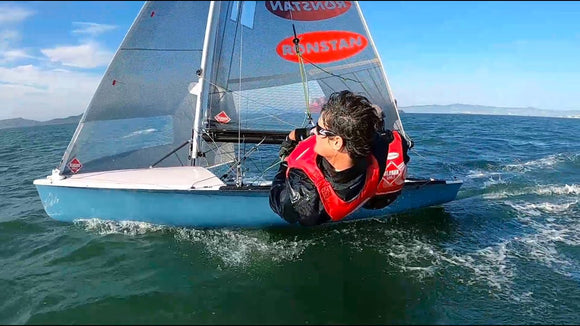
The best way to find out about new boats, new products, inventory, and sales.

In stock and ready to ship
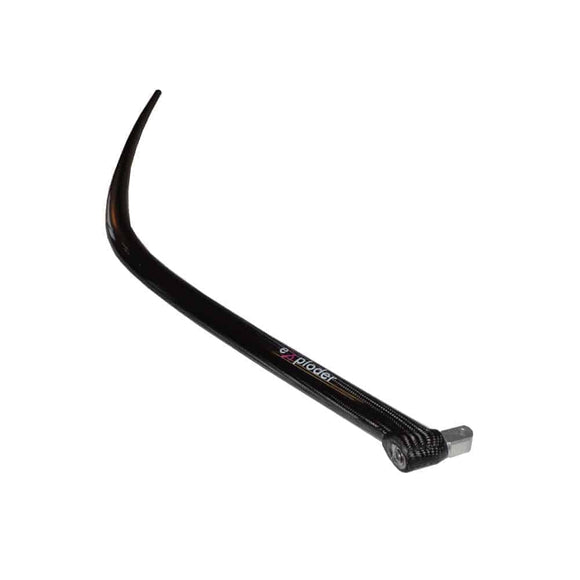
Curved Boom

T-ball Fitting for Hounds

Gooseneck – Side mast fitting Fiberfoam
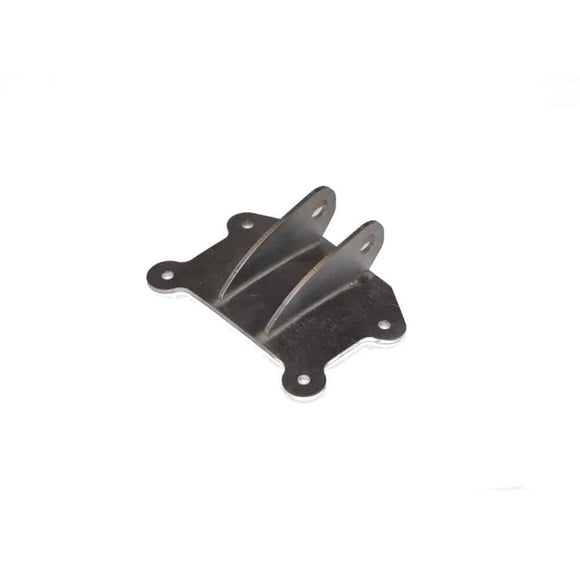
Gooseneck – Side mast fitting Exploder
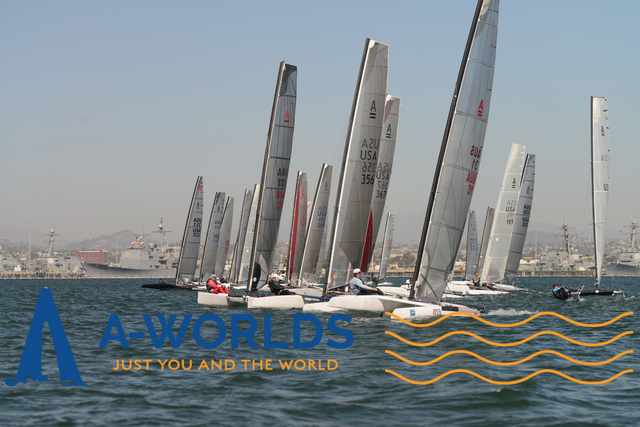
The A Class Worlds are coming to the US!
Check out the site for more details: http://aworlds.com

Welcome to Fast Boat Stuff!
Your best source in North America for gear for A Class Catamarans.
We are your dealer for Exploder Catamarans and Fiberfoam masts and all the parts to keep them in top shape.
Looking forward to serving all your needs and seeing you at the next A Cat Regatta near you!
- choosing a selection results in a full page refresh

Published on April 10th, 2023 | by Editor
A-Class Catamaran having it both ways
Published on April 10th, 2023 by Editor -->
The singlehanded A-Class Catamaran has a strong presence in the USA, which was strong enough to host the 2022 World Championship, and strong enough for the country’s Ravi Parent to win the Open division world title.
Scuttlebutt editor Craig Leweck checked in with Florida A-Class sailor Axel Issel for an update:
The A-Class Class rules allow for development, which is good for improving the boat but can get expensive as gear becomes obsolete. How does this impact participation?
The A-Class is divided into two sub-classes separated by different sets of measurement rules; the Foilers (Open) and non-foiling (the Classics). In the case of the Classics that have been around 67 years, most development has occurred in the last decade or so with the change from straight dagger boards to C foils and the deck-sweeper mainsail with curved booms.

Older hulls and masts remain competitive but the newer configurations do provide a slight advantage. Today, Classic boats from 10+ years keep winning Nationals and Continental championships and boats with straight booms and daggerboards still are in the top 5 in the Euro circuit.
The Classic fleet keeps growing in most countries due to the speed and simplicity of the boat; very competitive, tactical, fun races, with plenty of accessible boats around the globe. In many parts of the world, the Classics are very popular with larger numbers than Foilers like in the US/Canada, Italy, France, Australia, etc.
Sailors in Classics are competitive at all ages, many well into their 70s so it is a class where you can grow and be at the top for decades with your same boat for many, many years.
The Foilers have seen the most recent development. Here newer boats (2019-20 and newer) make a difference over older ones since they are easier and more stable to foil. Participation in the class is achieved in Classics due to very even and fun races with skippers with 20 years fighting 70s-year-olds. Participation in Foilers comes from younger sailors trying to master the fastest single-handed catamaran in the world.
Most of the top sailors in the world raced A-Cats at some point, even though it is a non-Olympic class. The A-Cat has consistently proven itself in the international scene whereby the World, European, and North American Championships are frequented by some of the most famous sailors in the world.
However, it’s always taken the dedication of a pure A-Class sailor to win the Championships. This demonstrates the high level of performance within the class and it leads to amazing numbers of entries for such events. Today, almost all top professional regattas are raced in foiling boats, like the America’s Cup, the Ocean Race, SailGP, etc, so learning and growing in a foiling A-Cat gives you experience and advantage, attracting young talents to the fleet.
When was the shift to foiling? How did the class endure that transition? Were there kits? Foilers started around 2015, but in 2018 the class decided to create two sets of rules to keep the non-foiling boats competitive, and two sub-classes were born. I believe this was a wise decision, to make the class appealing to a wider population.
Today you can be competitive in your 20s and into your 70s, with a newer Foiler or with an older Classic. Regattas are usually scored in two fleets, and some, like the North American Championship regatta, have the two fleets + the “Overall NA Champion” who is the best skipper among the two classes.
The transition was progressive, initially some folks modified the trunks on the hull to insert the newer foiling blades. Today, to be competitive in Foilers, you need a newer foiling specific boat. Manufacturers build two models: the Foiler and the Classic. The Classic is lighter, simpler and less expensive. The Foiler has a lower hull profile; is heavier due to extra carbon needed to support extreme foiling forces, and needs better physical input.
Has the foiling equipment stabilized or is it still evolving? For the last three years (late 2019-2020), there have been no new developments. The latest one was the rudder differential. Some have been working on differential for center foils with no success. Also, cambered sails with specific masts have been designed, but nothing new has come out. Until measurement rules for Foilers are changed, it will be difficult to see any new significant design improvement.
How is the used boat inventory in North America? Today, there are around 20 used boats for sale. Some used boats for sale are almost new, like a 2022 Foiler and newer Classics. You can buy an old Classic for less than $5K and be competitive in the Classic fleet. Used boats and parts can be found in https://usaca.info/ and in https://www.facebook.com/groups/922063451790001/ .
Who are the suppliers for North America? Are there any in the continent? Boats and masts builders are in Europe. Today, the largest manufacturer of boats is eXploder from Poland (with accessible labor), which provides new Classics and Foilers. Fastboatstuff.com is their representative in the US, and they carry new boats and parts for almost all new and older model boats. North America is getting shipments from Europe usually two times per year with new boats and parts. I have been in the class three years and I always find the parts needed quickly. Top competitive sails are built here in the USA by Glaser, Sail Technologies, etc.
Why do Foilers and Classics race together? Because it is way more fun, and way more competitive. The fleet is well mixed during races. In addition, it is a good way of keeping the fleet growing, making an easy and fun entry point to the class with more options. For example, I started in Classics two years ago and after the Worlds in Houston last year, I sold my Classic and I switched to the Open class.
Usually, the top Foilers will have an advantage but most part of the fleet is mixed. In lighter winds like sub 10 knots, the boats are even and in lighter non-foiling conditions, Classics are faster. Top light sailors can start foiling downwind around 8 knots but most of the foiling fleet foils closer with 10 knots of wind 100% air time, and upwind foiling is mastered only by the ultra-top sailors, and usually they need 12-13 knots of wind to make real gains over the top Classics going upwind.
For us, the newer foiling sailors, learning to foil (like me!), will always have Classics around showing how much ground is lost while we are trying to fly……and once on air, if we do not do the correct angle, Classics will pass you by. .Racing with 50 boats on the line, is always more fun than 20-30 boats, and chances are you always will have someone next to you on every mark.
What is the ideal sailor weight for the A-Cat? I believe 170-195 pounds is the ideal range, NED 007 Mischa Heemskerk won the world championship several times and he is 225+ lbs; the latest World Champion USA 76 Ravi Parent (2022 Rolex Yachtsman of the year) weighs around 165lbs . Who knows….!
Where are the hubs of class activity in North America? Florida concentrates 30% of the fleet, with Key Largo, and the Sarasota/Tampa Bay area being the most popular spots, followed by Fort Walton and Melbourne, FL. Lake Lanier in Georgia has one of the largest fleets, Annapolis/West River area is popular as well.
Lake Carlyle in Illinois, where we raced the 2021 North Americans, have several active boats. Also, there are 10 boats in Alamitos Bay in California, and there is a large fleet in Ontario Canada where we raced the 2022 North American Championship.
I heard a new fleet will grow soon in Mexico City as well. This year we are all looking forward to race in October the ‘Alter Cup’ in Pensacola, Florida, only for Classic boats, where skippers from other multihull fleets join the A-Catters to determine the best multihull skipper!

Tags: A-Class Catamaran , Axel Issel , Craig Leweck
Related Posts

Cole Brauer: Right place, Right time, Right person →

Living in the Scuttlebutt World →
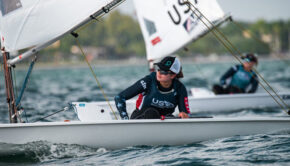
Only for those with Olympic aspirations →

Progress for world’s oldest yacht club →
© 2024 Scuttlebutt Sailing News. Inbox Communications, Inc. All Rights Reserved. made by VSSL Agency .
- Privacy Statement
- Advertise With Us
Get Your Sailing News Fix!
Your download by email.
- Your Name...
- Your Email... *
- Email This field is for validation purposes and should be left unchanged.


- WINDFOIL BOOM
- FORMULA KITE FOIL
- KITEFOIL RACEBOARD
- ONE PIECE CARBON BAR
View Cart Checkout
- No products in the cart.
Subtotal: € 0,00
- A-cat parts
Showing 1–16 of 59 results
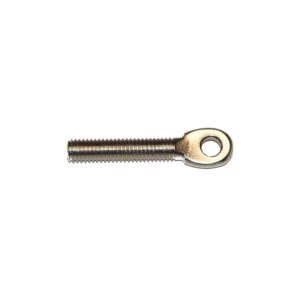
A-cat AD3 screw-eye for stays
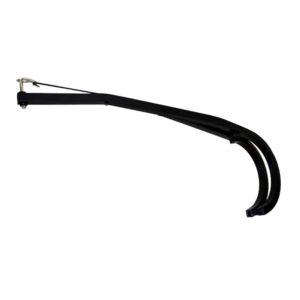
A-cat aluminium rudder’s stock

A-cat carbon radder’s stock (set: left and right side)

A-cat carbon round crossbar
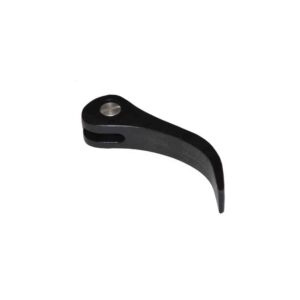
A-cat clamp for carbon radder’s stock (2 pcs.)

A-cat cover for trampoline
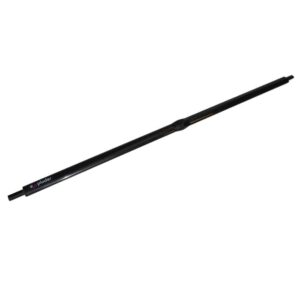
A-cat crossbar model 2019
A-cat crossbar model 2019 adjustable, a-cat crossbar model 2020 adjustable.
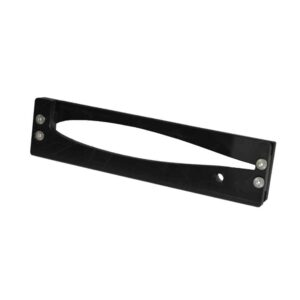
A-cat deck slider
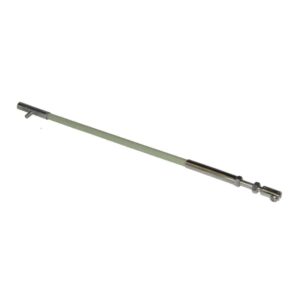
A-Cat rudder lock arm
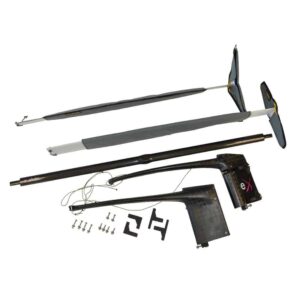
A-cat rudders set model 2019

A-cat set of adjustable hinges carbon lever system

A-cat set of hinges
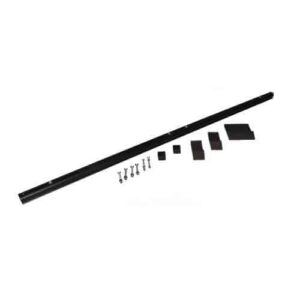
A-cat stright track
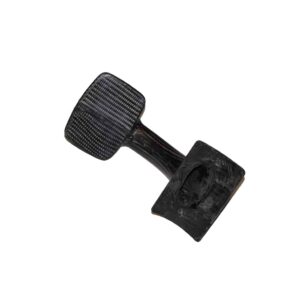

A-cat Tacktick holder
@media screen and (min-width: 70em){.css-1c47y9x{color:var(--chakra-colors-blue\.brand);}} A Cat Class buy/sell second hands, ads and prices
Launched in 1950, this is a class that aims for the best performance in a single-handed sport catamaran. Often made of carbon, now equipped with foils, the A-Class is the most technologically advanced class for solo racing. It is a very dynamic class and the level of the racers is very (very) high.
The Classe a would be the catamaran equivalent of the foiling Moth : light, technological, extreme, fast and bringing together the best in the discipline.
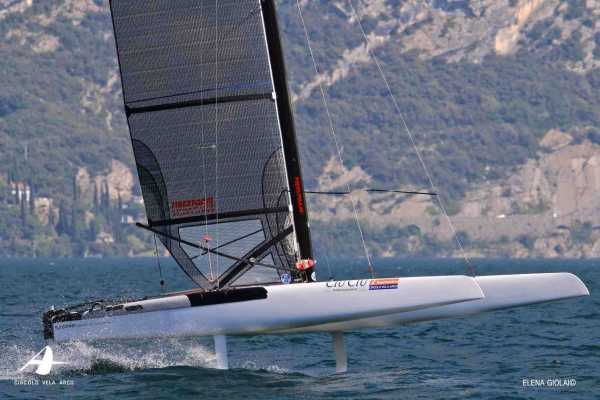
the last A Cat Class ads at the best price

Classe A Bimare for sale in Mulhouse

Classe A parts for sale in Gembloux

Classe A DNA for sale in Carnac

Classe A parts for sale in Saint-Gildas-de-Rhuys

Trolley / Trailer for sale in Saint-Gildas-de-Rhuys
A Cat Class presentation
The model A Cat Class has 2 differents versions : Classe A classic , Classe A foiler .
The A class catamaran, a unique spirit
The A-Class is a single-handed class, the freedom given by the gauge has allowed it to be always at the forefront of technological innovations. The result is a sports catamaran with a magnificent look, impressive and performing around 3 buoys. This open gauge allowed her to be one of the first light sail series to be equipped with foil. The A-Class now flies above the water.
Class A program
It is a boat intended more for regatta sailors than for sailors looking for "calm" rides. There are many shipyards producing A Class boats, including Marstrom, Bimare , Nacra, Addiction, Askell and DNA.
Second hand Class A catamaran
The second-hand A Classes remain quite expensive for recent productions, however, if one is looking for a catamaran for sailing more oriented towards leisure than performance: the bill will be much less expensive.
The entry prices for Class A boats are very low: sometimes 1000$ for old boats, on the other hand, recent Class A boats, those which can perform in championships, are traded for 20000$.
Buying or selling an A Class
This is where it all happens, you can find a lot of A-Class ads on iWannaboat.
Some figures of the A Cat Class catamaran :
Min price :
Max price :
Average price :
Median price :
Available boats :
Launch year :
Used A Cat Class price table
- Motorcycles
- Car of the Month
- Destinations
- Men’s Fashion
- Watch Collector
- Art & Collectibles
- Vacation Homes
- Celebrity Homes
- New Construction
- Home Design
- Electronics
- Fine Dining
- Baja Bay Club
- Costa Palmas
- Fairmont Doha
- Four Seasons Private Residences Dominican Republic at Tropicalia
- Reynolds Lake Oconee
- Scott Dunn Travel
- Wilson Audio
- 672 Wine Club
- Sports & Leisure
- Health & Wellness
- Best of the Best
- The Ultimate Gift Guide
- This New 131-Foot Aluminum Catamaran Concept Can Take on a Transoceanic Expedition
CMA's sturdy new multihull will be able to navigate choppy waters with ease.
Rachel cormack.
Digital Editor
Rachel Cormack's Most Recent Stories
Rossinavi just launched a custom, full-aluminum 164-foot superyacht, meet spear, an epic 460-foot trimaran concept that looks like it’s from the year 3000.
- Share This Article

Catamarans tend to be associated with casual coastal cruising rather than lengthy transoceanic expeditions, but Cristiano Mariani of CMA could help change that.
Related Stories
Architects and fashion designers are penning yachts, and it’s changing how they’re made.
- Airliners Are Trying Radical New Wing Designs to Improve Fuel-Efficiency
- Taking a Bow: How Yacht Makers Are Rethinking the Rear End

The layout can be entirely customized by the owner, as can the decor and furnishings. The lower deck is currently configured with two guest staterooms, three crew cabins, and a VIP, while the main deck features another VIP, the owner’s suite, a spacious lounge, and a functional galley. Two additional crew cabins are located in the bow, while the upper deck sports a lounge, a pantry, the captain’s cabin, and the wheelhouse. The interior could be tweaked to include one epic family area or even three VIPs. Owners can also add a spa to the owner’s suite or the VIPs.
Outside, the cat offers over 3,000 square feet of deck space for alfresco dining, entertaining, and lounging. The partially sheltered sundeck is adorned with sunbeds and a bar, while the upper deck is home to an inviting Jacuzzi. Down below, the stern is equipped with fold-out platforms that can be lowered to connect guests with the ocean. The expandable area doubles as a waterside beach club and a mooring spot for runabouts or Jet Skis.
Mariani says he can further develop the project with an engineer and interior designer, meaning that the chosen shipyard should be able to easily execute the build. He just has to reel in an owner.
Rachel Cormack is a digital editor at Robb Report. She cut her teeth writing for HuffPost, Concrete Playground, and several other online publications in Australia, before moving to New York at the…
Read More On:
- Explorer Yachts
More Marine

This New 262-Foot Superyacht Lets You Mix and Match 3 Interior and Exterior Designs

Culinary Masters 2024
MAY 17 - 19 Join us for extraordinary meals from the nation’s brightest culinary minds.
Give the Gift of Luxury
Latest Galleries in Marine

8 Fascinating Facts About ‘Nero,’ a 295-Foot Superyacht Inspired by a 1930s Classic

Palm Beach Vitruvius in Photos
More from our brands, first lady jill biden sparkles in sequined sergio hudson top and wide-leg pants at human rights campaign dinner, arizona’s sweet 16 run a bright spot amid $30m budget shortfall, ‘ghostbusters: frozen empire’ leads box office with $45 million debut, joan jonas, a performance art pioneer, gets the super-size moma retrospective she deserves, the best yoga blocks to support any practice, according to instructors.
BAA successfully places Class B bond; Moscow Vnukovo increases airline charges
UK 's unlisted BAA announced it has successfully placed a GBP400 million Sterling Class B bond, with a 2018 maturity and a fixed annual interest coupon of 6.25%. The company generated an initial order book of more than GBP1 billion and was able to price inside initial price guidance at 375 basis points over gilts. BAA plans to use the proceeds of the bond issue to refinance part of its existing bank debt, lengthening the group's debt maturity profile.
Meanwhile, Russia 's Federal Tariff Service ( FTS ) increased Moscow Vnukovo International Airport airline charges.
- Take-off and landing charges: increased by 7% to EUR3.92 (RUB154.10) per ton;
- Parking charges: 5% against the take-off and landing charge per hour (for passenger aircraft parked more than three hours after landing and freighter aircraft parked more than six hours after landing);
- Security charges: increased by 16% to EUR3.54 (RUB139.40) per ton;
- Domestic terminal charges: EUR1.16 (RUB45.50) per passenger, or EUR1.91 (RUB75.00) for international services;
- Passenger handling charge: EUR3.23 (RUB127.00) per passenger for domestic services, EUR3.66 (RUB144.00) for international services.
Other European airport operators that lost ground yesterday included Zurich (-1.2%) and Aeroporto di Venezia (-0.1%). Meanwhile, Fraport (+1.9%) and Gemina (+2.1%) shares gained.
Abertis shares gained 4% on Wednesday (01-Sep-2010) after Actividades de Construccion & Servicios SA and CVC Capital Partners Ltd agreed to hold their stakes in Abertis for at least three years.
Selected airports daily share price movements (% change): 01-Sep-2010
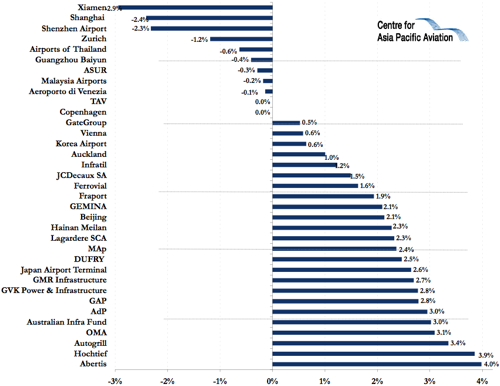
Source: Centre for Asia Pacific Aviation & Yahoo! Finance
Want More Analysis Like This?

- New comments
- Military Photos
- Russian Military
- Anti-Aircraft
- SA-21/S-400 Triumf
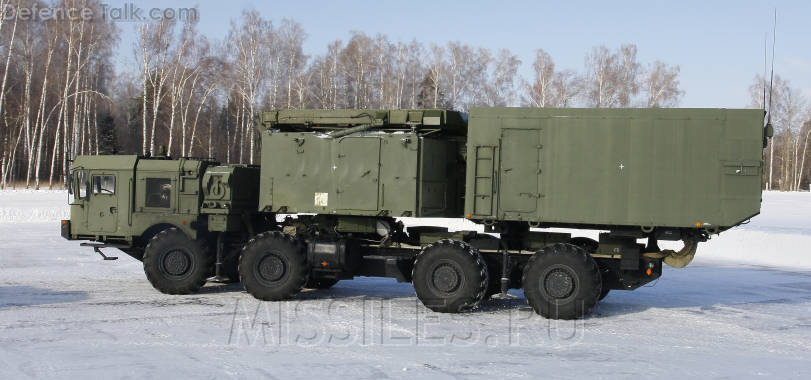
92N6E Radar, S-400
- Oct 18, 2010
Media information
Share this media.
- This site uses cookies to help personalise content, tailor your experience and to keep you logged in if you register. By continuing to use this site, you are consenting to our use of cookies. Accept Learn more…
- Things to Do
- Restaurants
- Vacation Rentals
- Travel Stories
- Rental Cars
- Add a Place
- Travel Forum
- Travelers' Choice
- Help Center
Global Class Museum of Space... - Pavilion 34 Kosmos
- Europe
- Russia
- Central Russia
- Moscow
- Moscow - Things to Do
- Pavilion 34 Kosmos
The most hi level museum among Russian museums. Informative exhibits and interactive sites plus... read more
The VDNH complex (read that review) hosts around 10 museums of different kinds, but this one... read more
Global Class Museum of Space Exploration!
Only two countries can boast of great achievements in space exploration -- Russia and the USA. In addition to the older cosmonaut museum, a new exhibit was opened in April, 2018. It is nearly complete, but open to the public now. It is a must see! It is a large, open area, and much of it is on two decks. The exhibits are touchable, and explanations are often in both Russian and English. There are models of early satellites, including the one that first took a dog into space. There is a full size MIR space station hanging and available for you to enter. On the main floor there a range of large, actual rocket engines, of leading design. There are surprises, as there are many drawers in the various exhibit areas containing articles from the Russian space program, including food, medical equipment, notes, newspapers, books, etc. Many drawers are not labeled, so enjoy exploring materials. The exhibits also include different space suits as their explorations continued. You can easily spend three hours exploring the exhibits. The area is open, and not crowded, so you can enjoy this at your own pace. This is a must see!


IMAGES
VIDEO
COMMENTS
eXploder AD3 is A-Class sailing catamaran - one of the fastest singlehanded sailing boats on the water. The eXploder A-Class cats have been in production since 2013 and in that time won a staggering 6 World Championship titles and 15 Continental titles. Since it's conception the eXploder platform has been improved over and over again.
Click images for slideshow and orig size. - Exploder D3 2020 A-Cat first impressions When the DNA F1 was launched we labeled it the coolest sailboat ever built. This new Exploder D3 A-Cat might not have the fancy aero of the DNA but is loaded with latest development from the joint effort of Jakub Kopyowicz / Exploder yard and Gonzalo Redondo from D3 Applied Technologies.
D3 Applied Techonologies / Exploder statement on the new AD3 2020 A-Class. "The AD3 2020 model is the result of over a decade of learning, testing, failing, succeeding at times, and overall, developing these boats. With the previous platform we made some compromises from a design perspective, enabling us to build test boats over the years ...
The final winner mainfoil for Exploder became the 'Z22' , Brewin won at Sopot with those. The rider in video above is an excellent monohull & F18 sailor, Hernan Salerno, he has about 1yr of A-Class sailing and latest mod to his A15 are the 388mm winglets from Exploder. Hernan reports a noticeable change from the 2018 Sopor winglets.
Got my new Exploder AD3, an A-class catamaran that flies on hydrofoils. The sail is from world champion Steve Brewin and the mast is from Austrian manufactur...
What's the newest A class catamaran have for the foiling set? A Class fanatic Bailey White gives us a tour as the 40-boat fleet assembles at the Helly Hansen...
EXPLODER 2019: It can be Flyer or Classic: Including:-Z24 and Z27 daggerboards-New set of rudders with the newest winglets-Sail brewing 2021. - Classic curve daggerboards. 2023. - Sail hammer (agost 2023).-Trailer suitable for two boats and to keep the sails and tools and other staff.-beach cart - two uv sun protect coverts. - one lycra for ...
A Class - Full Foiling 2017 eXploder AD3 - negotiable. Shipping to USA (48 States) "None" means shipping included or see Description For Shipping Info. New Years' Resolution: Win some foiling regattas in 2024! This is a Competitive Exploder platform, with Z22 foils, rudder rake controls, a lightly used Brewin mainsail, and a Glaser training ...
The official organisation for the A-Class catamaran is the IACA (International A division Catamarans Association). The A-Class rules were expanded over time to prevent the cost of these boats from rising too high and to ensure fairness in racing. Max overall boat length : 5.49 m / 18.3 ft (= still the old IYRU rule) Max overall boat width : 2. ...
The 'A' Class Catamaran - Its place at the top table. At 18ft long with a total allowed rig area of 150ft2, but weighing in at a mere 75kg, the 'A' Class is very much a Formula One car in catamaran form and in the last few years, developments have seen this class take off more than ever before, quite literally. ... The Polish Exploder ...
The official site for the British 'A' Class Catamaran Association. Designed to inform new and existing 'A' Cat sailors about UK 'A' Class trends. Official Partner. ... Exploder boom, and Exploder asymmetrical winglet rudders, I am around 100Kg. The A Cat world is very diverse, my settings will not work exactly the same with your setup, but may ...
A-Class: Sailing the Exploder. Liked this boat since day 1, and after seeing it at Bordeaux and finally sailing here in BA, it has confirmed my good vibes. I've Been sailing the Exploder A14 almost every day past weeks. At Bordeaux Europeans in June I sailed & raced the Scheurer G6. This Exploder has 80cm rudder blades, at Carnac the Arg guys ...
The A Class Worlds are coming to the US! ... Fiberfoam Parts. Welcome to Fast Boat Stuff! Your best source in North America for gear for A Class Catamarans. We are your dealer for Exploder Catamarans and Fiberfoam masts and all the parts to keep them in top shape. Looking forward to serving all your needs and seeing you at the next A Cat ...
The singlehanded A-Class Catamaran has a strong presence in the USA, which was strong enough to host the 2022 World Championship, and strong enough for the country's Ravi Parent to win the Open ...
The eXploder store was created to enable customers to purchase parts, rigs and accessories for eXploder catamarans.
The A-Class catamaran is a development gauge for sport catamarans. It is the king of single-handed sport catamarans. This catamaran built in carbone fiber is very fast. Now the A Cat has foils and it flyes on the water. Launched in 1950, this is a class that aims for the best performance in a single-handed sport catamaran.
This New 131-Foot Aluminum Catamaran Concept Can Take on a Transoceanic Expedition CMA's sturdy new multihull will be able to navigate choppy waters with ease. Published on March 21, 2024
Exploder A13 is a project of a new high performance A-class catamaran that was started in the summer of 2012. The precise moment of accession to the design and construction work is difficult to determine, since it is a smooth transition from the previous models such as the Mayfly A-class (2011), and A-class catamaran eX One (2012). 1.
UK's unlisted BAA announced it has successfully placed a GBP400 million Sterling Class B bond, with a 2018 maturity and a fixed annual interest coupon of 6.25%. The company generated an initial order book of more than GBP1 billion and was able to price inside initial price guidance at 375 basis points over gilts.
1. Electrostal History and Art Museum. 2. Statue of Lenin. 3. Park of Culture and Leisure. 4. Museum and Exhibition Center. 5.
First S-400 bltn, Elektrostal, Moscow. This site uses cookies to help personalise content, tailor your experience and to keep you logged in if you register.
A-Class: Learning to Foil the Exploder (Part III) Unusual cold rainy winter this year, so not much sailing. The F18s have been racing and training for the Worlds past months, but the 'Panzer tanks' can sail in almost any condition, with the F18 you can go out and charge +25knots and hard chop/waves. With the A for me the plan is always to ...
Pavilion 34 Kosmos: Global Class Museum of Space Exploration! - See 68 traveler reviews, 194 candid photos, and great deals for Moscow, Russia, at Tripadvisor.
I dedicated some hours adding clamcleats and a rope to lift the new Exploder J/Z foils. Wind started building offshore as expected with super flat river conditions, I geared up quickly and went out in around +15knots and building steadily. The FP guys ended sailing in 25knots that day, gp video of them tomorrow. I went out no cam. with the A.